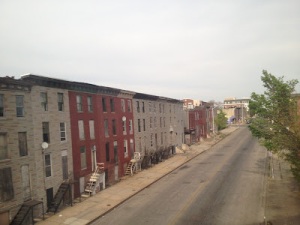 From Community Architect blogger Klaus Philipsen: "Several US cities take their urban form mostly from one particular kind of housing, the rowhouse. This is especially true in the northeast and mid Atlantic where Boston, Philadelphia, Baltimore, and Washington all have long rows of attached houses.
"The well-to-do folks know these neighborhoods from the windows of an Amtrak coach, with seemingly endless decrepit and abandoned rowhouses. Thus, next to the highrises of the 'projects', the rowhouse has the lowest status of all housing types.
From Community Architect blogger Klaus Philipsen: "Several US cities take their urban form mostly from one particular kind of housing, the rowhouse. This is especially true in the northeast and mid Atlantic where Boston, Philadelphia, Baltimore, and Washington all have long rows of attached houses.
"The well-to-do folks know these neighborhoods from the windows of an Amtrak coach, with seemingly endless decrepit and abandoned rowhouses. Thus, next to the highrises of the 'projects', the rowhouse has the lowest status of all housing types.
"The bad name is undeserved for many reasons. The rowhouse offers direct access from the ground and direct access to a yard, however small. Nobody walks over anybody else's head in a rowhoue, there are no public hallways, stairways, or elevators to take care of, and still density can be as high as 45 units per acre. Only two walls are exposed, the roof area is minimized, and the footprint is small. This makes the rowhouse quite sustainable.
"In all the images of abandoned and boarded-up rowhouses it is often overlooked how the rowhouse has also been successfully adopted by yuppies and urbanistas of all colors. From Georgetown to Federal Hill to Society Hill, the rowhouse has been the backbone of the gentrification of these neighborhoods.
"It can't be the rowhouse that is at fault when a neighborhood declines. Rather than being the culprit, the rowhouses has proven itself as resilient enough to weather all kinds of trends and flexible enough to accomodate all kinds of needs." Full post here.
